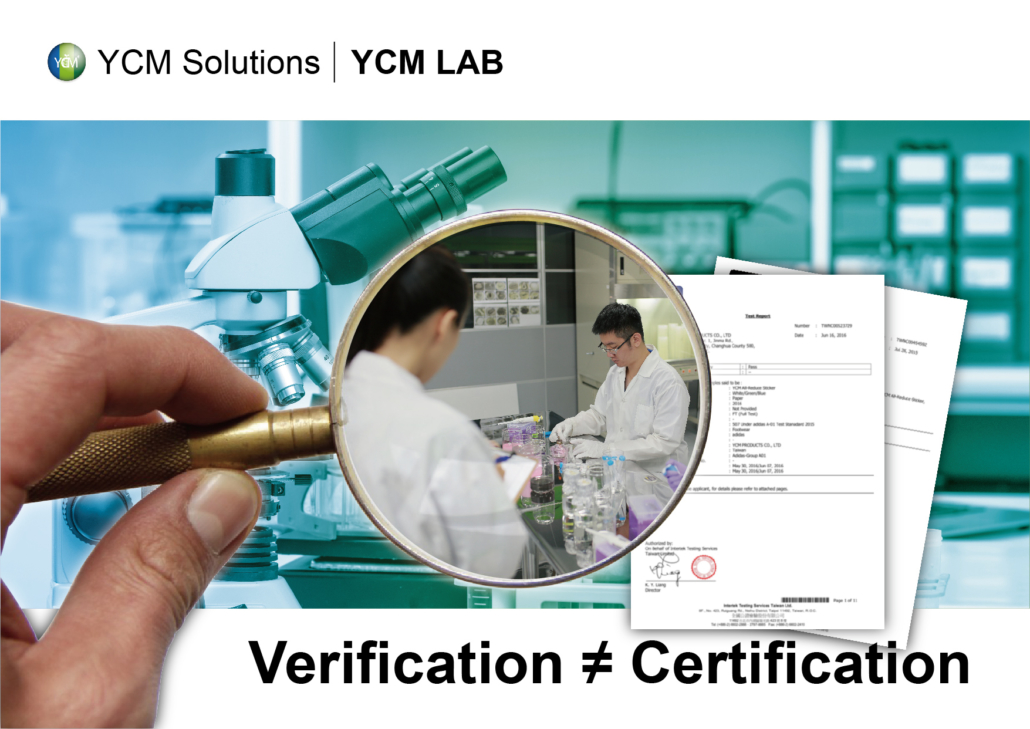One minute to understand the SGS and ITS test report through 5 major indicators.

Nowadays, most of manufacturers provide third-party test reports to show that their services or products are trustworthy. However, there are too many types of test reports for consumers to know whether the reports are “useful.”
In fact, only passing test doesn’t mean that the product meets your needs. The devil is in the details!
Let YCM tell you how to review these test reports from five directions!
1. Do the test items meet the claimed efficacy?
Case 1: The product claims to have antibacterial effect, but they only do AATCC 147 antibacterial test.
AATCC 147 is a qualitative test. Only observe whether the bacteria will grow on sample and if there is a inhibition zone. AATCC 100 is a quantitative test that can measure the antibacterial efficacy.
If they say the test is based on a certain regulation, customizing status, etc., you should pay more attention, it may not be suitable for claimed efficacy.
Case 2: A nano silver antibacterial spray claims to have bactericidal effect and passes the SGS test, but they do only heavy metal test, which is inconsistent with the product’s claimed efficacy. This is a meaningless test report.
2. The report needs to list all passed regulations in detail, because each product testing regulation is different.
Case: YCM All-Reduce Sticker passed FTTS-FA-018:deodorization test for textile, ASTM G21:mold resistance test (every quarter), AATCC 147:antibacterial test (every quarter)
3. List all names of mold in the test and the antibacterial rate (the highest level is >99.9%)
Case: The report clearly lists bacterial name, such as Escherichia coli. And test results of antibacterial rate: >99.9%
If you don’t know much about the bacteria species, you only need to see if the name is listed. Usually, the name of the species is complicated which is difficult to counterfeit.
4. Do the actual ingredients fit in with the declared ingredients?
For example, a nano silver antibacterial spray manufacturer claimed that “nano silver” is harmless to human body and has been tested by a third party to prove that it is not carcinogenic. But in fact, nano silver spray kills bacteria by “silver ions” which are dissolved from “nano silver + water.” Some studies have shown that “silver ions” do harm to human body. (Some says it’s beneficial to human, not much discussion here)
In conclusion, the actual sterilization ingredient of this product is “silver ion,” not harmless “nano silver” as they declared. So the differences between ingredients mislead consumers.
Recommend a popular science website:美的好朋友
5. Without carcinogen ingredients PFOA/PFOS, does not mean it is not carcinogenic
PFOA/PFOS are known as carcinogenic ingredients, but there are actually other unknown ingredients that we cannot detect at present. Thus, the product may still contain other ingredients which cause cancer even pass PFOA/PFOS test. So it is incorrect to say their product will not cause cancer.
YCM upholds the good faith, all products have passed the third-party test with correct and useful results. We hope that through this column, consumers can better understand how to distinguish the correct information of the product conveyed by the test report.

Leave a Reply
Want to join the discussion?Feel free to contribute!